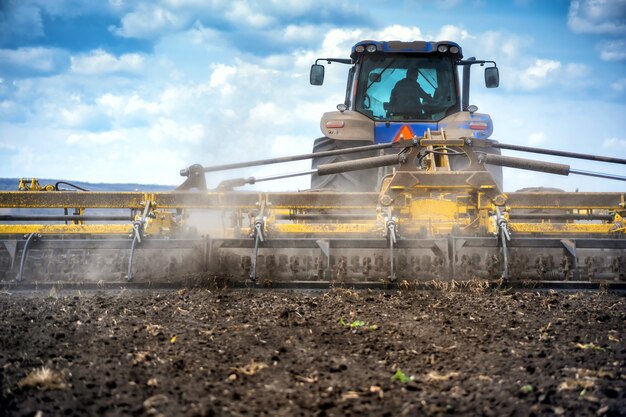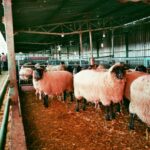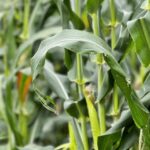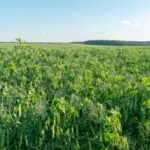In modern farming, the cultivator is a key piece of equipment that plays a crucial role in maintaining crop health and preserving soil quality. It is a versatile tool used for soil preparation, weed control, and aeration, which are essential for sustainable farming practices. Understanding the role of the cultivator in agriculture helps farmers optimize their operations and ensure long-term productivity.
What is a Cultivator?
A cultivator is a farm implement designed to stir and loosen soil. It is typically used after primary tillage (such as plowing) to prepare seedbeds or manage weeds. Cultivators come in various sizes and types, from small hand-held models to large tractor-mounted machines, making them suitable for different farm sizes and needs.
How the Cultivator Promotes Crop Health
- Weed Control
Weeds compete with crops for water, nutrients, and sunlight, significantly reducing yields. Cultivators help manage this issue by uprooting or burying weeds, effectively eliminating competition and allowing crops to thrive. - Soil Aeration
Compacted soil can inhibit root growth and limit access to essential nutrients. Cultivators break up the soil, improving aeration and drainage. This creates an ideal environment for root development and enhances nutrient absorption, leading to healthier crops. - Nutrient Incorporation
Cultivators mix organic matter, fertilizers, and crop residues into the soil, ensuring that nutrients are evenly distributed. This improves soil fertility and provides crops with the resources they need for optimal growth. - Improved Water Retention
By breaking up compacted soil, cultivators enhance water infiltration and retention. This ensures that crops receive adequate moisture, even during dry spells, reducing the risk of water stress.
The Role of the Cultivator in Soil Preservation
- Minimizing Soil Erosion
Unlike heavy tillage equipment, cultivators disturb the soil minimally, reducing the risk of erosion. They maintain a protective layer of organic matter on the soil surface, which helps prevent the loss of topsoil due to wind or water. - Maintaining Soil Structure
Excessive tillage can degrade soil structure, leading to compaction and loss of organic matter. Cultivators strike a balance by loosening the soil without excessive disturbance, preserving its natural structure and promoting microbial activity. - Sustainable Weed Management
Cultivators offer a mechanical solution to weed control, reducing the need for chemical herbicides. This is particularly important for maintaining soil health and preventing chemical residues from accumulating in the soil. - Support for Conservation Agriculture
Cultivators are compatible with conservation agriculture practices, such as minimal tillage and cover cropping. By reducing soil disturbance and preserving organic matter, they contribute to long-term soil health and productivity.
Types of Cultivators
- Tine Cultivators
Equipped with metal tines, these are ideal for breaking up soil and managing weeds in row crops. - Disc Cultivators
These use rotating discs to cut through soil and vegetation, making them suitable for heavy-duty tasks. - Rotary Cultivators
These machines use rotating blades to mix soil and incorporate organic matter, often used in vegetable farming. - Spring-Tooth Cultivators
These are designed for lighter soil preparation tasks, offering minimal soil disturbance.
Tips for Using Cultivators Effectively
- Timing: Use the cultivator when the soil is moist but not waterlogged to prevent compaction.
- Depth Adjustment: Set the cultivator depth appropriately to avoid damaging crop roots or over-disturbing the soil.
- Regular Maintenance: Ensure blades and tines are sharp and free from damage to maintain efficiency.
- Complement with Other Practices: Combine cultivation with crop rotation and organic amendments to maximize benefits.
The cultivator is an indispensable tool for promoting crop health and preserving soil quality. By controlling weeds, improving soil aeration, and maintaining soil structure, it helps farmers achieve sustainable and productive farming practices. When used correctly, the cultivator not only supports current crop yields but also ensures that the soil remains fertile and healthy for future generations. Farmers who invest in proper cultivation techniques are investing in the long-term success of their farms.
Join 'Farmers Mag' WhatsApp Channel
Get the latest Farming news and tips delivered straight to your WhatsApp
CLICK HERE TO JOIN






